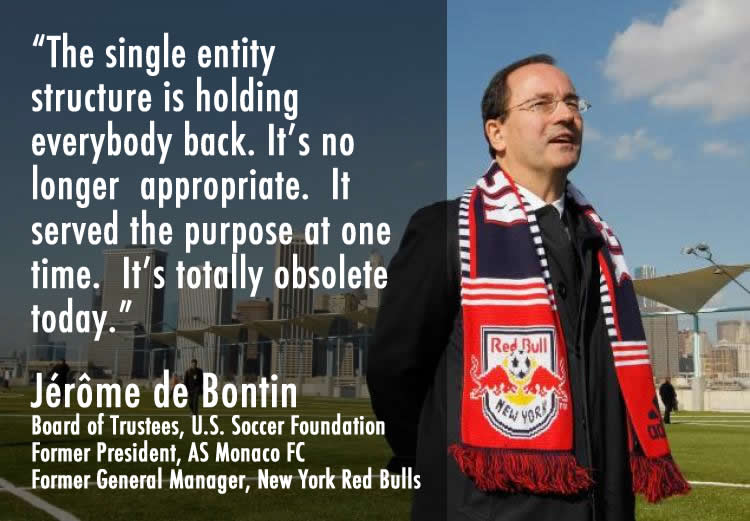If you've ever had a discussion about how closed league single entity MLS business affects soccer as a whole in this nation, I'm sure you've seen a thought expressed similar to this tweet...
@THEChrisKessell We are significantly further along than we were 20 years ago and wouldn't be having this conversation without this system.— WrongSideOfThePond (@wrongsideofpond) December 22, 2016
The common line of reasoning is that the Single Entity structure of MLS and the closed league structure of the US Pyramid has allowed the protection needed for the fledgling sport league to achieve the slow and steady growth it has had so far.
This is FALSE. By the words of FC Dallas President Dan Hunt, in 2001 the league died. It's single entity structure... closed league... USSF supported model... failed.
The league was, in theory, dead. They gave up and were ready to close up shop. MLS had failed. The investors were out and there would no longer be a top flight professional soccer league in the United States.
For at least a few hours, MLS essentially ceased to exist.READ THE ENTIRE ARTICLE HERE
"We were having a league call in November and the league folded," Hunt said. "It went out of business, they were preparing the documents and that was it."
The creation of Soccer United Marketing (SUM) as the marketing arm of MLS in 2002 saved the business.
So really what allowed MLS the business to come back from the dead?
1. SUM deals with disgraced admitted criminal Chuck Blazer.
2, SUM brokered USSF National Team assisted media deals with obvious Conflict of Interest issues.
3. SUM selling Mexican National Team sponsorships and matches in the United States
4. SUM selling FC Barcelona to the US market
and much more from SUM.
It is plainly obvious that SUM is the driving force behind the current growth of MLS. Without it the closed system single entity model was a massive failure.
What many don't know is that at any point in time USSF could decide to pull the NT assistance for the severely under-performing MLS media rights deals and decide to sell the NT media rights in house like every other sport governing body in the country does.
At any point in time USSF could stop allowing SUM to host Mexican NT games on US soil.
At any point in time USSF could stop sanctioning any SUM promoted friendlies.
Will it? Should it even do this? Those are very big questions. Any of these things could easily put a huge damper on MLS/SUM growth.
What USSF also could do...
1. Mandate an end to the current privately owned for profit league system.
2. Outlaw the "single entity" model MLS employs.
It would allow current MLS investors to continue to profit via ownership shares in a newly spun off (and highly profitable) SUM. They would also be acquiring independent ownership of their clubs that would be firmly stationed in Division 1 USSF controlled soccer.
A separate positive by-product of this split would be the relieving of quite a bit of the COI issues related to soccer governance in the US.
This would be a great first step toward more USSF control of how the US soccer pyramid is managed and a future Open Pyramid featuring #ProRelForUSA.
















